Technical Innovations By Omega
Renowned for its rich heritage and relentless pursuit of innovation, the popular collections from the Omega watch brand have long been synonymous with precision, durability, and elegance. This Swiss watchmaker, with a history dating back to 1848, has not only witnessed but also shaped the evolution of timekeeping. From the wrists of world leaders to the lunar surface, throughout the history of Omega watches the brand has been part of many pivotal moments.
What sets Omega apart is its unwavering commitment to technological advancement. The brand has consistently been at the forefront of watchmaking innovation, blending exquisite craftsmanship with groundbreaking technology. This journey of innovation is marked by significant milestones: the creation of the world’s first diver's watch, the iconic Speedmaster's role in space exploration, and the revolutionary co-axial escapement that redefined mechanical watchmaking. Each of these achievements underlines Omega’s ethos: a relentless quest for perfection.
As we explore "Omega's Technological Innovations," we delve into the storied past and visionary future of a brand that does more than just tell time. Omega creates timepieces that narrate stories of human achievement, precision, and the relentless pursuit of excellence.
The Heritage of Omega: A Timeline of Excellence
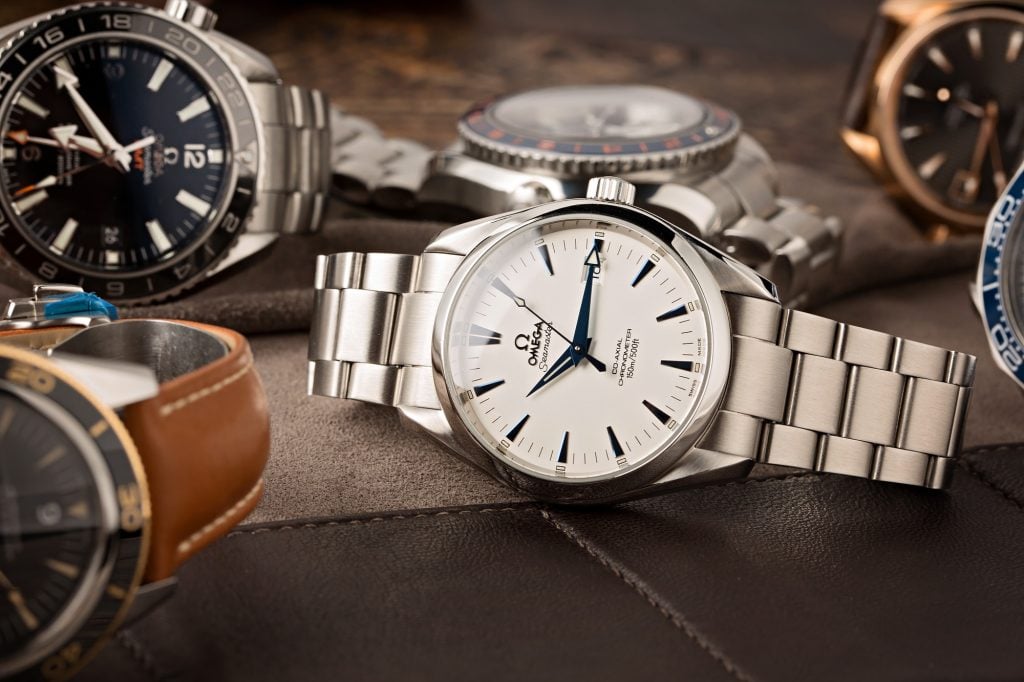
Omega's journey, spanning over 170 years, is a narrative of continuous innovation and excellence. Founded in 1848 by Louis Brandt in La Chaux-de-Fonds, Switzerland, Omega began as a small workshop but quickly earned a reputation for precision and quality. In 1894, the brand introduced the ‘Omega’ caliber, a revolutionary movement that was not only highly accurate but also easy to repair, setting the stage for global expansion.
The early 20th century saw Omega’s ascendancy in precision timing. The Omega brand gained acclaim in 1932 as the official timekeeper of the Olympic Games, a role it has held 28 times, more than any other timekeeper. This was more than a feat; it was a testament to the brand’s commitment to precision under the most demanding conditions.
In the 1940s and 1950s, Omega's technological prowess continued to grow. The Seamaster, introduced in 1948, capitalized on the brand’s experience with waterproof watches during World War II. This line set new benchmarks for underwater timekeeping and robustness, becoming a staple for divers and adventurers alike.
The 1960s marked a monumental achievement when the Omega Speedmaster collection was chosen by NASA for all manned space missions, earning the nickname "The Moonwatch" after accompanying astronauts on the Apollo 11 lunar mission in 1969. This achievement was not just a testament to its precision and durability but also to Omega's ability to perform in extreme conditions.
Innovation continued in the late 20th and early 21st centuries, with Omega pioneering the use of revolutionary materials and technologies. The introduction of the co-axial escapement in 1999 exemplified this, offering greater precision and reduced maintenance, and solidifying Omega’s position as a leader in mechanical watchmaking.
Today, Omega's legacy is not just in the timepieces that adorn wrists but in the timeless tales of human achievement and innovation they represent a legacy that continues to evolve and inspire.
Innovations that Changed Watchmaking

Omega's influence on the watchmaking industry is punctuated by several pioneering innovations, each marking a leap in technology and design. These advancements not only cemented Omega’s status as a leader in the field but also reshaped the landscape of horology.
The Co-Axial Escapement: Unveiled in 1999, the co-axial escapement represents one of the most significant mechanical watchmaking innovations since the invention of the lever escapement. Developed by English watchmaker George Daniels and perfected by Omega, this technology drastically reduces friction between components, offering greater precision over time and diminishing the need for maintenance. The co-axial escapement was a bold step forward, showcasing Omega's dedication to improving the longevity and performance of mechanical watches.
Revolutionary Materials: Omega's quest for innovation extends beyond mechanics to the materials used in its watches. The brand was one of the first to introduce titanium and ceramic in watchmaking, materials known for their durability, lightness, and aesthetic appeal. In recent years, Omega has also developed its own alloys, like Sedna™ gold, which blends gold, copper, and palladium for a unique, long-lasting rose gold hue. These material advancements not only enhance the functionality and durability of the watches but also their aesthetic versatility.
Magnetic Resistance: In 2013, the brand achieved yet another breakthrough. The brands creation of the first Omega movement resistant to magnetic fields greater than 15,000 gauss, which was significantly higher than any previous standard. This advancement addressed one of the longstanding challenges in watchmaking – magnetic interference, which can affect a watch’s accuracy. By using non-ferrous materials in the movement, Omega set a new benchmark in the industry, leading the way in creating timepieces that maintain precision in various environments.
**Omega's innovations have continually pushed the boundaries of what is possible in watchmaking. From the intricacies of the escapement to the choice of materials, each advancement reflects a blend of tradition and futuristic vision, a hallmark of Omega's enduring legacy in the world of luxury timepieces.
Omega Watch Movements
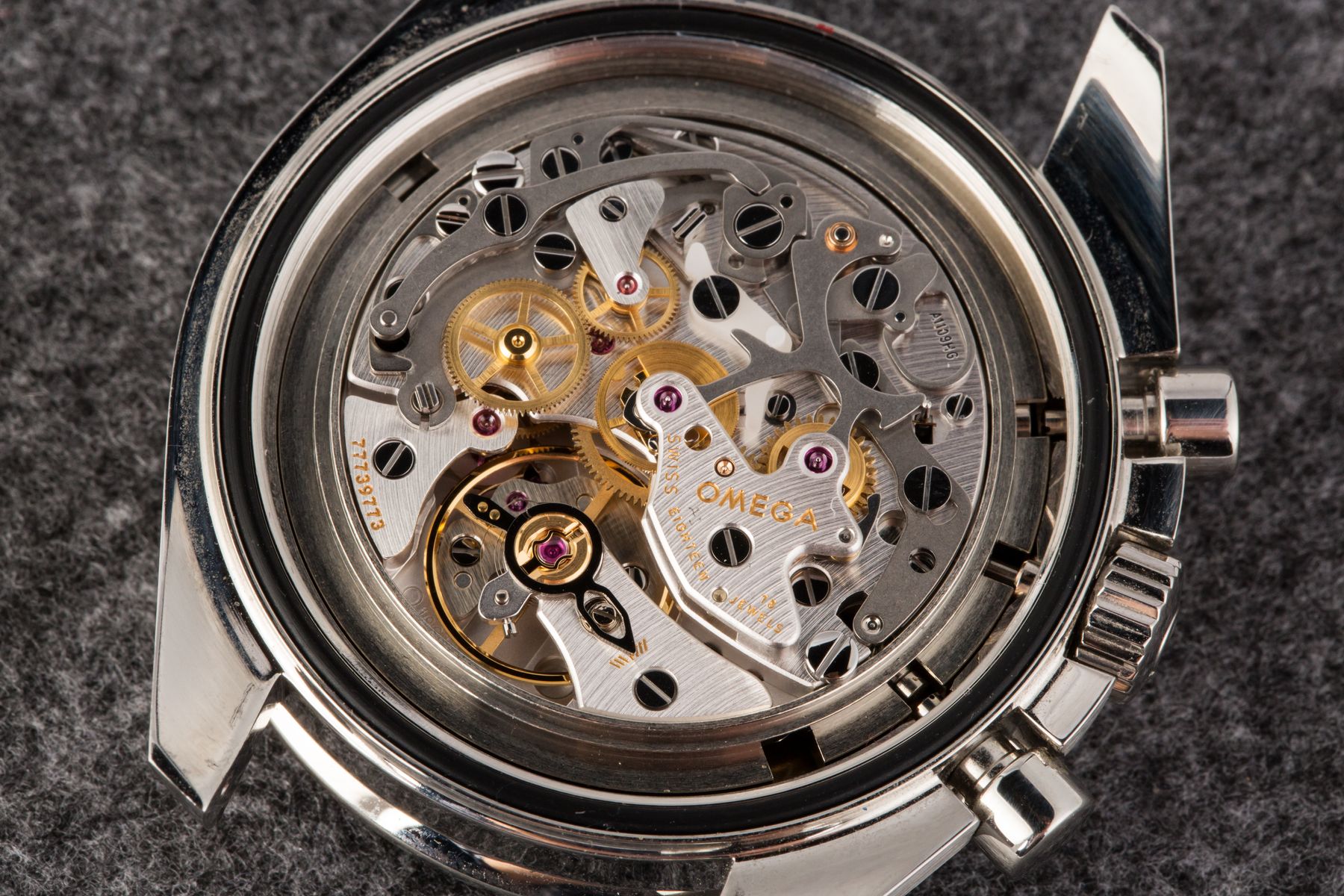
At the heart of every Omega timepiece lies its movement, the intricate mechanism that powers the watch and ensures its precision. Throughout its history, Omega has developed and innovated upon a range of movements that have not only set new standards in watchmaking but have also become icons. Let's delve into some of the most notable Omega movements that have left an indelible mark on the horological landscape
Omega Caliber 8500/8501
Introduced in 2007, the Omega Caliber 8500 marked a significant milestone in the brand's pursuit of precision and innovation. This automatic movement was the first to utilize Omega's revolutionary co-axial escapement, a technology that minimizes friction and enhances the overall accuracy of the watch. Developed in-house by Omega's skilled engineers and watchmakers, the Caliber 8500 set a new benchmark for the industry, offering improved performance, longer power reserve, and greater resistance to shocks and magnetism. The Caliber 8500, and its slightly modified version, the Caliber 8501, have become the backbone of many of Omega's modern collections, ensuring that each timepiece delivers the brand's signature precision and reliability.
Omega Caliber 1861
The Omega Caliber 1861 holds a special place in the annals of watchmaking history. This manual-winding mechanical movement, complete with a chronograph function and two chronograph subdials, was first introduced in 1969 and has since become synonymous with the legendary Omega Speedmaster Moonwatch. The Caliber 1861 was an integral part of the equipment worn by NASA astronauts during their historic moon missions, withstanding the rigors of space travel and proving its mettle in the most challenging of environments. The robustness and reliability of this movement have made it a favorite among watch enthusiasts and collectors alike, with the Caliber 1861 continuing to power the Speedmaster Professional Moonwatch models to this day, a testament to its enduring legacy.
Omega Caliber 8900/8901
In 2015, Omega introduced the Caliber 8900/8901 as part of its Globemaster collection, marking another leap forward in the brand's pursuit of horological excellence. This automatic movement boasts the prestigious Master Chronometer certification, meaning it has passed a series of rigorous tests conducted by the Swiss Federal Institute of Metrology (METAS) for precision, performance, and magnetic resistance. The Caliber 8900/8901 incorporates Omega's co-axial escapement and Si14 silicon balance spring, offering unparalleled accuracy and stability. With a power reserve of 60 hours and a resistance to magnetic fields of up to 15,000 gauss, this movement exemplifies Omega's commitment to creating timepieces that not only deliver exceptional performance but also maintain their precision in the most challenging conditions.
Omega Caliber 9300
The Omega Caliber 9300 holds the distinction of being the first movement to be entirely developed and manufactured in-house by the brand. Introduced in 2011 as part of the Speedmaster collection, this automatic chronograph movement marked a significant milestone in Omega's journey towards complete vertical integration. The Caliber 9300 features a column-wheel mechanism and a co-axial escapement, ensuring smooth operation and enhanced precision. With a power reserve of 60 hours and a frequency of 28,800 vibrations per hour, this movement offers a perfect blend of performance and reliability. The Caliber 9300 has become a mainstay in Omega's line-up, powering a range of models across different collections and cementing the brand's position as a true manufacturer.
Omega Caliber 321
The Omega Caliber 321 is a movement steeped in history and legend. First introduced in 1942, this manual-winding chronograph movement gained fame as the powerhouse behind the original Omega Speedmaster models that accompanied NASA astronauts on their missions to the moon. The Caliber 321 is renowned for its precise construction, reliability, and robustness, attributes that made it the perfect choice for the rigors of space exploration. In recent years, Omega has reintroduced the Caliber 321, by painstakingly recreating its original specifications and manufacturing, the brand used a blend of both traditional techniques and modern technology. The resurgence of the Caliber 321 is a testament to Omega's commitment to its heritage and its dedication to preserving the legacy of one of the most iconic movements in watchmaking history.
Design and Craftsmanship: The Omega Aesthetic
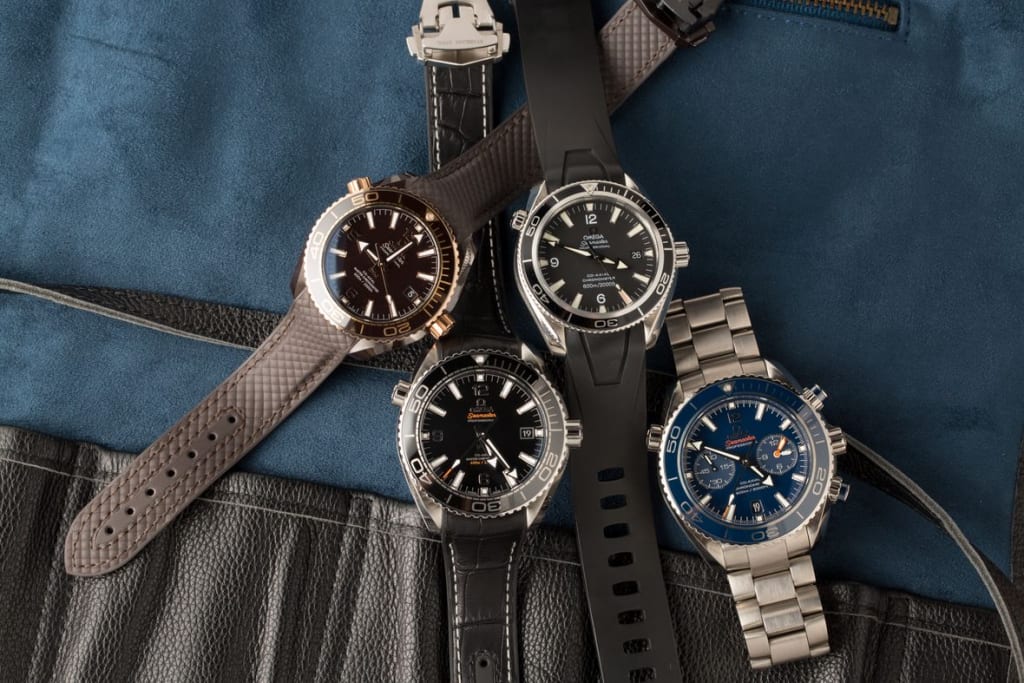
The design ethos of Omega transcends mere aesthetics, embodying a fusion of innovation, precision, and artistry. This unique blend is evident in every timepiece, making Omega a symbol of sophisticated craftsmanship and timeless design.
Evolution of Design: Omega's design philosophy has evolved over the decades, yet it retains a consistent thread of elegance and functionality. From the classic simplicity of the Omega Seamaster to the bold, distinctive look of the Omega Speedmaster, each collection reflects a deep understanding of form and function. The brand’s ability to adapt and innovate while maintaining a recognizable aesthetic is a testament to its design mastery.
Precision in Detail: At the heart of Omega’s design is an unwavering attention to detail. Each component, no matter how small, is crafted with precision. This meticulous approach is evident in the clarity of the watch faces, the seamless integration of the bracelets, and the harmonious proportions of each model. The result is a collection of timepieces that are not only visually stunning but also ergonomically superior.
Innovative Materials: Omega's pioneering spirit extends to its use of materials. The brand has been a frontrunner in incorporating non-traditional materials like ceramics and Liquidmetal®, which have enhanced the aesthetic appeal and durability of its watches. These materials are chosen not just for their physical properties but also for how they contribute to the overall design narrative of each timepiece.
Craftsmanship and Technology: The convergence of traditional watchmaking techniques with modern technology is a hallmark of Omega's craftsmanship. Skilled artisans employ time-honored methods alongside cutting-edge technology to create watches that are both technically impressive and artistically compelling. This blend ensures that each Omega watch is not just a functional timepiece but a work of art.
Omega's dedication to design and craftsmanship is more than a commitment to quality; it’s a celebration of the aesthetic values that have defined the brand for over a century. Each Omega watch is not just a timekeeper; it’s a piece of history, crafted to perfection.
Omega in Extreme Conditions: From Deep Seas to Outer Space

Omega's reputation for precision and durability isn’t confined to comfortable settings; it extends to some of the most challenging environments on Earth and beyond. The brand's timepieces have proven their mettle in the deep seas and the vastness of space, showcasing their exceptional performance under extreme conditions.
Conquering the Depths: The Seamaster Legacy The history of Omega Seamaster starts in 1948, where the brand was initially designed for divers and maritime activities. The Seamaster watches are renowned for their water resistance and robustness. The Seamaster Professional line, launched in the 1990s, further cemented Omega’s status in deep-sea exploration. These watches can withstand the pressures of the deep ocean, thanks to their innovative case designs, helium escape valves, and superior sealing techniques. Whether it's accompanying professional divers or exploring uncharted underwater territories, the Seamaster stands as a testament to Omega’s prowess in creating watches that excel in aquatic environments.
Speedmaster History: A Journey to the Moon and Beyond The history of Omega Speedmaster begins with a journey into space in the 1960s when NASA selected the Omega Speedmaster for all manned space missions, a decision that earned it the moniker "The Moonwatch." The Speedmaster’s robustness, reliability, and visibility under varying light conditions made it an ideal choice for space exploration. It played a crucial role in the Apollo 11 mission in 1969, becoming the first watch worn on the Moon. This historic achievement wasn’t just a milestone for Omega but a symbol of human triumph. Since then, Speedmasters have been part of numerous space missions, enduring extreme conditions like zero gravity, sudden temperature shifts, and high radiation, proving their reliability beyond Earth's atmosphere.
Beyond Performance: Meeting Challenges with Innovation Omega's success in extreme conditions lies in its commitment to innovation. The brand continuously tests and refines its timepieces to meet and exceed the demands of professional divers and astronauts. This pursuit of excellence ensures that Omega watches do more than tell time – they become reliable companions in the most challenging environments, embodying the spirit of adventure and exploration.
In Omega's narrative, the deep seas and outer space are more than just testing grounds; they are chapters in a story of relentless pursuit of precision and durability, where each timepiece isn’t just a tool, but a witness to human achievement and resilience.
Sustainability and Ethical Responsibility
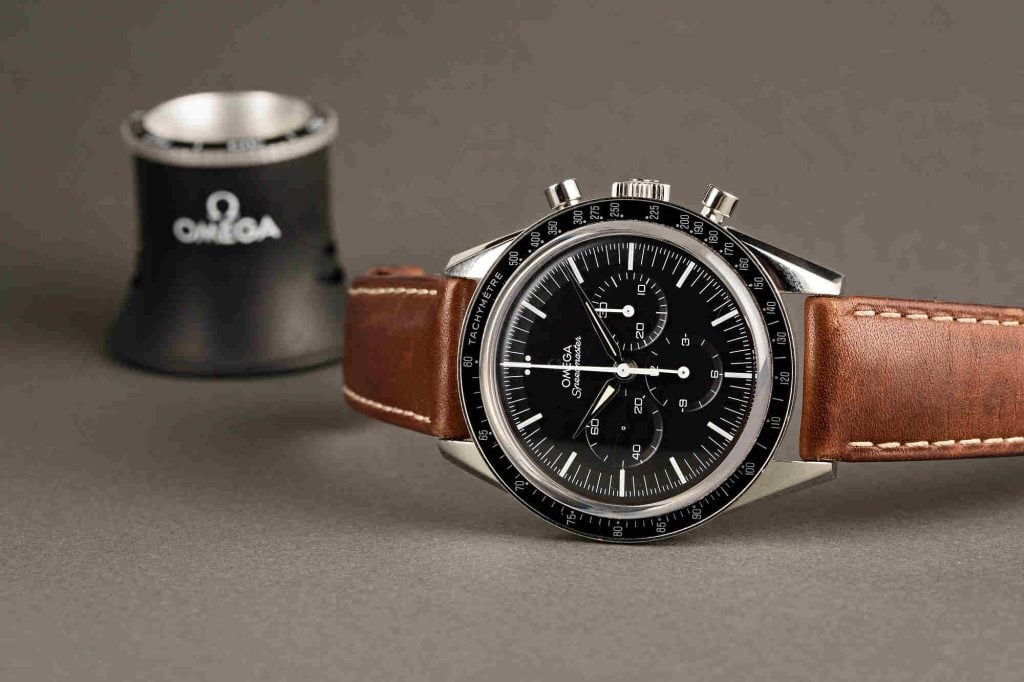
In the realm of luxury watchmaking, Omega's commitment extends beyond crafting exquisite timepieces. Omega is equally devoted to sustainability and ethical responsibility, recognizing its role in fostering a more sustainable and equitable future.
Eco-Friendly Practices: Omega's approach to sustainability is multi-faceted. It starts with the responsible sourcing of materials. The brand ensures that the precious metals, diamonds, and other materials used in its watches are ethically sourced, adhering to environmental standards and human rights practices. This commitment is part of a broader strategy to minimize the environmental impact of its production processes.
Reducing Carbon Footprint: Omega is actively working to reduce its carbon footprint. From optimizing its manufacturing processes to employing energy-efficient technologies in its facilities, the brand is committed to eco-friendly practices. This includes the use of renewable energy sources and the implementation of waste reduction and recycling programs in its production facilities.
Community and Environmental Initiatives: Beyond its manufacturing processes, Omega engages in various initiatives aimed at environmental conservation and community support. These range from supporting ocean preservation projects to collaborating with organizations dedicated to safeguarding endangered species and habitats. Through these efforts, Omega demonstrates that luxury and responsibility can coexist, aligning its brand values with actions that contribute positively to the planet and its inhabitants.
Omega's commitment to sustainability and ethical responsibility reflects an understanding that true luxury encompasses not just the quality of the product but the integrity of its creation. In this way, Omega not only sets a standard in watchmaking but also leads by example in corporate responsibility and environmental stewardship.
The Future of Omega: Continuing the Legacy of Innovation
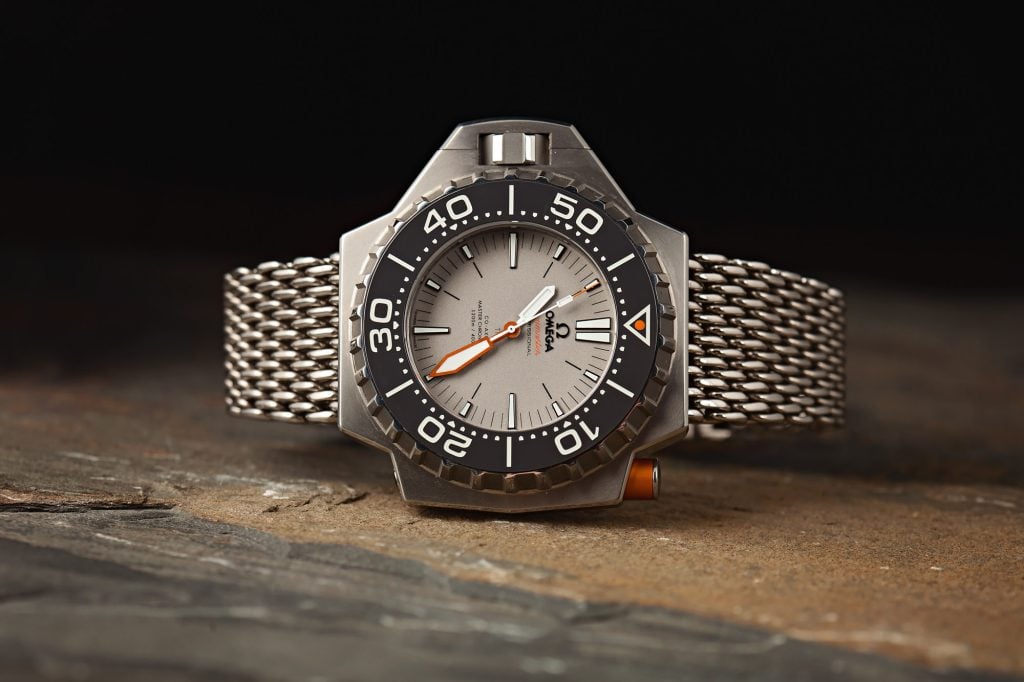
As Omega looks towards the future, its legacy of innovation and excellence remains the guiding star. The brand, renowned for its pioneering spirit, continues to embrace new challenges and opportunities with the same fervor that has defined its past.
Embracing Technological Advancements: The future of Omega is closely tied to ongoing technological advancements. The brand is poised to integrate emerging technologies, from advanced materials to new manufacturing techniques, ensuring that Omega watches remain at the forefront of precision and durability. This might include further exploration into anti-magnetic materials, enhanced movement technologies, or even the integration of digital elements in traditional watchmaking.
Sustainable Growth: A key aspect of Omega’s future is its commitment to sustainability. The brand is set to deepen its efforts in eco-friendly practices, sustainable sourcing, and responsible production. This approach not only aligns with global environmental goals but also resonates with a new generation of consumers who value ethical and sustainable luxury.
Expanding Horizons: Omega's exploration of extreme environments is likely to continue, pushing the boundaries of where and how a watch can function. Whether it’s innovations for deep-sea exploration or timekeeping in space, Omega is expected to maintain its role in accompanying humans in their most ambitious endeavors.
A Legacy Reimagined: As Omega moves forward, it will continue to balance its rich heritage with a forward-looking approach. By marrying tradition with innovation, the brand is set to continue its legacy, not just as a watchmaker, but as an emblem of human achievement and the relentless pursuit of excellence.
With over two decades of experience in the luxury watch industry, the Bob's Watches Editorial Team stands at the forefront of watch expertise and insight. Our team, composed of seasoned watch enthusiasts, skilled horologists, and knowledgeable industry insiders, is dedicated to bringing you the latest and most accurate information in the world of luxury timepieces. We pride ourselves on our meticulous attention to detail and our unwavering commitment to authenticity. Our editorial content is a reflection of our passion for luxury watches and our dedication to providing our readers with comprehensive, unbiased, and up-to-date information. Our expertise spans a wide range of topics, including in-depth reviews of the latest models, historical retrospectives of iconic timepieces, and insightful analyses of market trends. We are also renowned for our detailed guides on watch maintenance and investment advice, making us a trusted resource for both seasoned collectors and new enthusiasts alike. As thought leaders in the watch industry, we understand the importance of staying ahead of the curve. That's why we continually update our knowledge and skills, ensuring that our readers receive the most current and relevant information. Whether you're seeking advice on your next luxury watch purchase or looking to deepen your understanding of watch craftsmanship, the Bob's Watches Editorial Team is here to guide you.